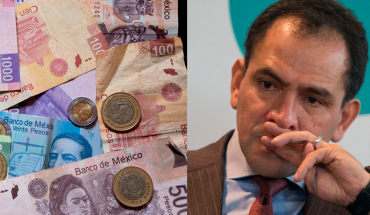Submitted by:
Good and happy Monday! Well, a week before the start of the Qatar 2022 World Cup, it is clear that silver rules. Gone are the criticisms of human rights violations and corruption and now the focus is on matches and the business of football. FIFA says the event will generate about $4.7 billion and brands continue to make strong bets.
There has been no detectable trade boycott and sponsorships are sold out, with long-standing partners such as Coca-Cola and Adidas. The brand of the three strips details that it expects an increase in sales of up to 500 million dollars for its sponsorship of the tournament. Brands pay up to US $ 75 million to be a sponsor And football? Overall it has been entertaining, with more passion and tension than quality, and some great surprises. I plead guilty. I’m glued to my Smart TV and I watch everything I can.
One news story that’s flying under the radar is about copper. Amid headlines that speak of a complex situation in Codelco, Bloomberg revealed that, in the medium and long term, it is feared that there will be a severe shortage of copper as a result of the energy transition and that Chile would be a protagonist.
The reason? It is a technology developed by the startup Jetti Resources that would allow millions of tons of copper to be extracted from rocks, landfills and mine waste. BHP already has plans to test the technology in Escondida and Rio Tinto is already doing so. If successful, an additional 8 million tonnes could be produced.
We are already less than a month away from Christmas, so before starting with what summons us, I want to invite you, in Christmas spirit, to share or join El Semanal, and El Semanal Exprés, so that our community continues to grow. Subscribe to or share this newsletter.
1
1- THE BATTLE OF LITHIUM IN MARICUNGA
What’s going on: There is an underground and all-out battle for the right to exploit lithium in the Salar de Maricunga, the second most important after the Atacama. What sparked the dispute is the decision of the Ministry of Mining to accept a legal appeal filed by the state mining company Codelco, to modify the legal interpretation of the existing belongings in said salt flat. If approved, the exploitation of lithium in Maricunga would remain entirely in the hands of the State. The controversial legal argument that supports the position of the state mining company and the Government was made by the lawyer of the Carey study, Rafael Vergara, between 2018 and 2019.
Who is Rafael Vergara. Carey’s lawyer is an expert in mining matters and has provided legal advice to Codelco. But he has also been an advisor to Tianqi, SQM’s partner in the Salar de Atacama, and SQM itself.
The legal history of lithium. The Mining Code of 1932 did not distinguish between concessionable and non-concessionable substances. In 1979, during the dictatorship, lithium was decreed as a substance reserved for the State. But then, in the 1980 Constitution, that decree law was “organically repealed,” mandating the law to define which substances are inconceivable.
Now comes the complicated part. There is consensus among mining lawyers that the general rule is that all substances are conceivable, but that this restriction does not apply to lithium belongings validly constituted prior to the entry into force of the bodies of laws that reserved it. That is, mining companies that have lithium belongings obtained under the protection of the old regulations, can make use of that right. That argument is questioned by Codelco with the support of the Ministry of Mining.
Several mining executives and lawyers in the sector point out that the government is using this new legal interpretation as a way to move forward with its plan to leave lithium exploitation mainly in the hands of the state. And, in this sense, they point to a legal vacuum, since in Chile there is no regulation for the management of salt flats.
If this argument prevails in Justice, the other companies that are developing projects in the salt flat would be left without options, including Simbalik, a Chinese mining company in which businessman Francisco Javier Errázuriz is a partner, and Salar Blanco, of an Australian mining company. Both have informed the Government that, if they insist on their legal argument, they would go to court, and sources close to the controversy indicate that the demand would be at least US $ 2,500 million. Analysts warn that as long as this is not clarified, no one will invest and banks will not put a peso forTo finance the projects.
If you want to read the full review, subscribe to El Mostrador Semanal and join our community.
2
2- LA POLAR, ITS WORD VERSUS THAT OF THE BRANDS
What happened?. La Polar is again at the heart of a scandal. For the youngest, I tell you that 11 years ago the multistore was the protagonist of one of the biggest financial scams in modern history. This was the case of the unilateral reagreements of debts to delinquent clients and that marked the beginning of the questioning of companies, which was accentuated with the case of political money (SQM) and paper collusion (CMPC), which ended up hitting the legitimacy of the model.
The company went bankrupt and, after a reorganization process, León Vial -partner of LarrainVial and protagonist of the Cascadas case- was left with control. It is worth mentioning that he had invested millions of dollars prior to the scandal and lost almost all of them.
The new scandal. He is accused of selling fake Adidas, Under Armour and Columbia apparel and products. Specifically, Under Armour’s representative accuses La Polar of infringing the Industrial Property Law. During the week, eight warehouses of the retailer were raided. The complaint was joined by the National Chamber of Commerce.
Polar insists that its products are original and explains why there is a “misunderstanding”. That misunderstanding would be because La Polar dances to local distributors and goes out to buy in the secondary market in the United States and Panama.
The company specified that these are garments purchased directly from factories and distributors authorized by the brand abroad, which correspond to surplus stock or previous seasons. The process also includes different stages to review the complete traceability of the products, control the quality and prove that they are indeed certified.
To continue reading, subscribe to El Mostrador Semanal and join our community.
3
3- TRUCKS, THE HOSTAGE ECONOMY AND ALTERNATIVES
What happened?. The agreement with truckers has not put an end to the blockades, and the Treasury and La Moneda are beginning to worry about their impact on an economy that is already entering recession. The strike implies the blockade of Route 5, the main highway in the country and through which practically all the national cargo is mobilized.
Millionaire cost for an already weakened economy. Fruit exporters have already warned about their problems exporting and this weekend alerts grew about the shortages that the blockades are generating in some parts of the country. Supermarket chains, exporters and mining also warned that, if the blockades were maintained, the impact would be measured in billions of dollars.
What they are asking for is madness. Carriers demand the fixing of the value of the liter of diesel for six months; ending weekly fuel hikes; greater security on roads where, they say, robberies and assaults have increased; and the installation of “rest areas” on the route.
But from the Government and among private economists there is unanimity in describing the demands as “disproportionate”. Finance Minister Mario Marcel said its cost could be around $6.5 billion. “Only the fiscal cost of reducing fuel prices by 30%, through Mepco, and maintaining it for six months, is in the order of 2,500 million dollars, if the prices of hospitalization remain as they are today.”
The former Minister of Finance, Ignacio Briones, used his Twitter account to remember that there are public policies that could take away the power of blackmail from truckers: it is called competition and the following thread explains it.
If you want to read the full review, subscribe to El Mostrador Semanal and join our community.
4
4- CHART OF THE WEEK: SANTIAGO AND QUALITY OF LIFE
Despite the outbreak, the pandemic and a weakened economy, Santiago is the second city with the best quality of life in Latin America. This is affirmed by the index of habitability (quality of life) published every year by The Economist Intelligence Unit (EIU). The study evaluates living conditions in 172 cities based on more than 30 factors.
Buenos Aires continues to be the best place to live in the region and fights the ranking to the big cities of Europe, the United States and Asia. Education, health and cultural services counteract the economic crisis that the country is experiencing. The Uruguayan capital, Montevideo, is at a level similar to Santiago among the cities with the best quality of life in the region.
The TOP 10. The top ten places in the ranking are still dominated by cities in Western Europe, along with several in Canada.
If you want to read the full review, Subscribe to The Weekly Counter and join our community.
A message from the AFP Association
For more information click on the image
Profitability should be evaluated in the long term:
Full information can be found at this link or by clicking on the image.
5
5- NO HEELS OR TIES
– In the end it seems that it ended up being a bluff. We talked about the intentions of Álvaro Saieh to sell his properties in New York, London and Santo Domingo, Chile. In total, they are worth more than US$ 120 million and the sale announcement was seen as a reflection of the complicated economic situation he faced in the last two years and that forced him to default, cede control of his real estate business and be forced to hand over his package of shares in Itaú CorpBanca.
A few weeks ago he launched his $49 million apartment in New York. The one who bought his daughter never put it up for sale and continues as the owner of the one in London. In addition, sources who know the inmate, assure that he would not have sold his large house on the beach of Santo Domingo, Chile. Several of his local creditors say the sales ads were never more than that and that Saieh had no real intentions of selling.
If you want to read the full story, subscribe to El Mostrador Semanal and join our community.
– The Government refines the details to announce its plan to lend a hand to the construction companies. It is a line of credit that would be granted through BancoEstado and that responds to a plan prepared by the Ministries of Housing, Finance and Economy. It will be a special line of financing focused on companies that face difficulties in applying for benefits such as Fogape.
The plan would be added to the one already announced by the Minister of Housing, Carlos Montes, which aims to help families access the dream of their own home through a state guarantee of 10% of the value of the property for prices between 2,600 and 4,500 UF and an extension of the coverage of 100% of the auction insurance for those homes between 1,600 and 2,800 UF.
– Roman Blanco’s honeymoon at Santander Chile is over. The Spanish executive who arrived in Chile 6 months ago to replace Claudio Melandri and Miguel Mata as the sole head of the bank’s operations in the country, has already begun to set the tone, assign priorities, as well as take measures to recover the ground it lost with Banco Chile and face the challenge of Scotiabank, BCI and Itaú Chile. Sources inside the bank say Blanco has been clear about the way forward and what is acceptable and unacceptable.
If you want to read the full story, subscribe to El Mostrador Semanal and join our community.
– The BCI officially opens its operations in Peru. The entity that controls Luis Enrique Yarur and his family is the only private bank with Chilean capital among the big 4 and together with Scotiabank they are beginning to fight the market to Santander. After the successful bet on the United States, the BCI now makes a strong bet on Peru. In that country, the BCI will initially focus on serving corporate clients and large companies, both local and Chilean. Yarur is betting on being the main financial group in the region in the next five years.
Great party in Lima. It was held on November 16 at the Museum of Art of Lima (MALI) and was attended by Yarur, the general manager, Eugenio von Chrismar, and Gonzalo Camargo, CEO of BCI Peru. Von Chrismar stressed that they expect to exceed US $ 1,000 million in placements by 2023 and the plan is that in the next three years the credits will be close to US $ 3,000 million.
6
6- AGENDA OF THE WEEK: IMACEC AND EMPLOYMENT
– Tax reform. The week starts this Monday with the beginning of the most important discussion of the Government’s tax reform project: changes to income tax. It’s where the biggest knots are. The Treasury proposal includes the disintegration of the system and a new tax on retained profits. In addition, the increase for the upper middle brackets of the Complementary Global Tax also generates controversy, in addition to the elimination or adjustment of some exemptions.
– Growth and employment. On Tuesday we will have the employment figures for the August-October period and the consensus is that they should confirm that formal employment is still stagnant and with downward pressure, although it could have a temporary rebound due to Christmas activity. That same day we will have October retail sales, which probably fell 15%, and industrial production, which would have fallen 4.2%, according to Bloomberg.
On Thursday the Central Bank will publish the Imacec for October and it is estimated that activity continues to cool and that we are already experiencing a recession. The question is how severe and long it will be. In the Treasury they are convinced that the worst projections will not materialize.
– The large economic groups travel to Buenos Aires. As I told you on Thursday, the delegation is led by Rodrigo Hinzpeter, prosecutor of Quiñenco, holding company of the Luksic Group, director of CCU and former Minister of the Interior of Piñera I. The delegation also includes senior executives and directors of Cencosud (Paulmann), Arauco (Grupo Angelini) and CMPC (Matte Group), among others. They are all companies with huge investments in Argentina, where Chile is one of the 5 largest investors.
To read the full story, subscribe to El Mostrador Semanal and join our community.
7
7- EL SEMANAL INVITES YOU TO A NEW WORKSHOP ON FINANCIAL INCLUSION
Click on the image to participate
We invite you to the second meeting of a new series of El Semanal Workshops on financial inclusion as a tool to combat inequality. The focus of next Wednesday’s workshop will be banking as an agent of change.
We will talk about open finance, technological irruption, competition and the paradigm shift in data use and ownership.
The guests are Ignacio Briones, former Minister of Finance, and Luis Opazo, general manager of the Association of Banks.
And if you missed the first chapter and could not participate live, here is a recording of what was a conversation about financial inclusion as a tool for economic growth and to combat inequality.
Submitted by:





![translated from Spanish: [VIDEO] Medical College denounces Carabinieri attack with tear gas at the point of press at the Santa Maria Clinic translated from Spanish: [VIDEO] Medical College denounces Carabinieri attack with tear gas at the point of press at the Santa Maria Clinic](https://ananoticias.com/wp-content/uploads/2019/11/translated-from-Spanish-VIDEO-Medical-College-denounces-Carabinieri-attack-with-370x215.jpg)